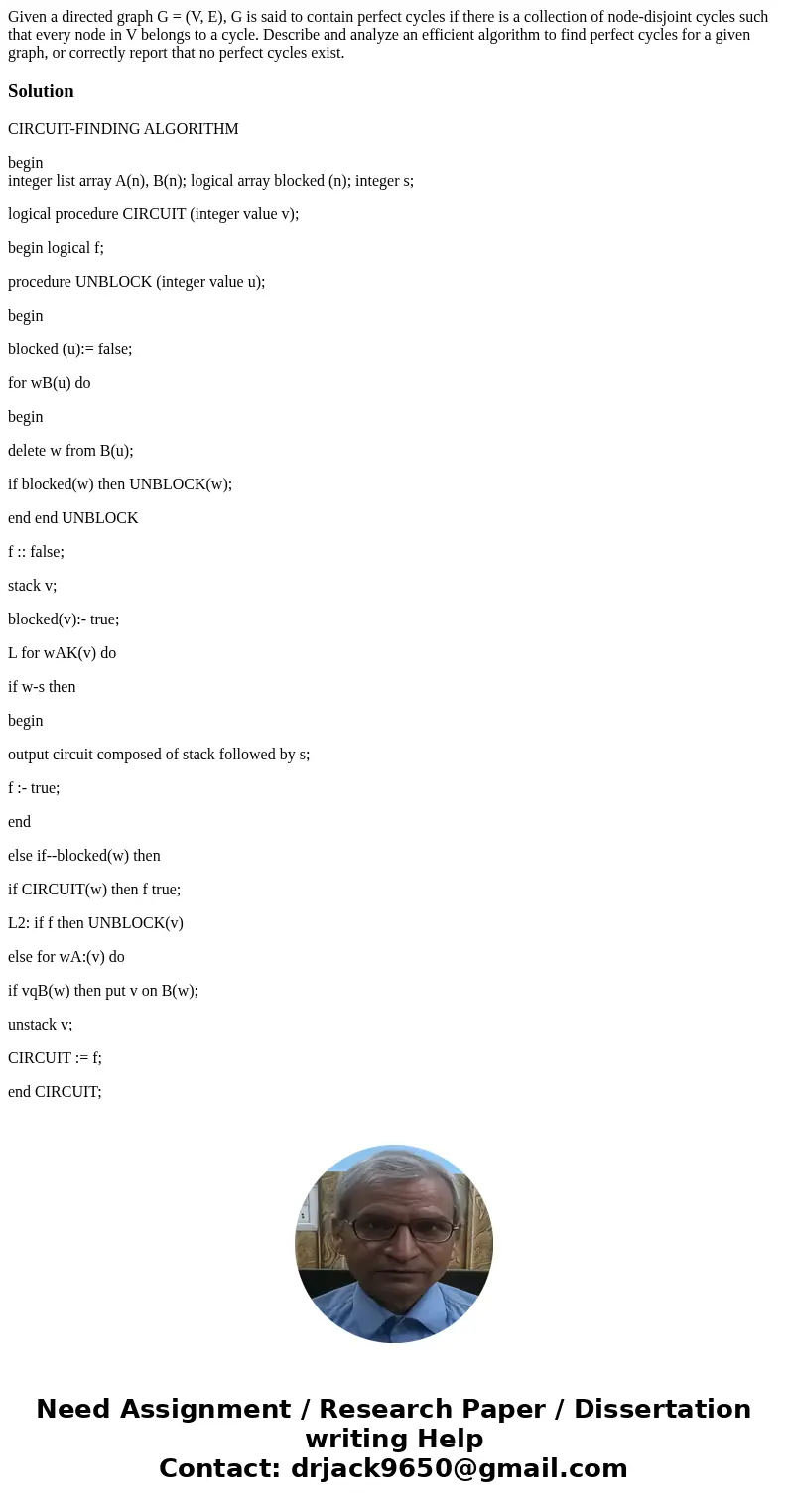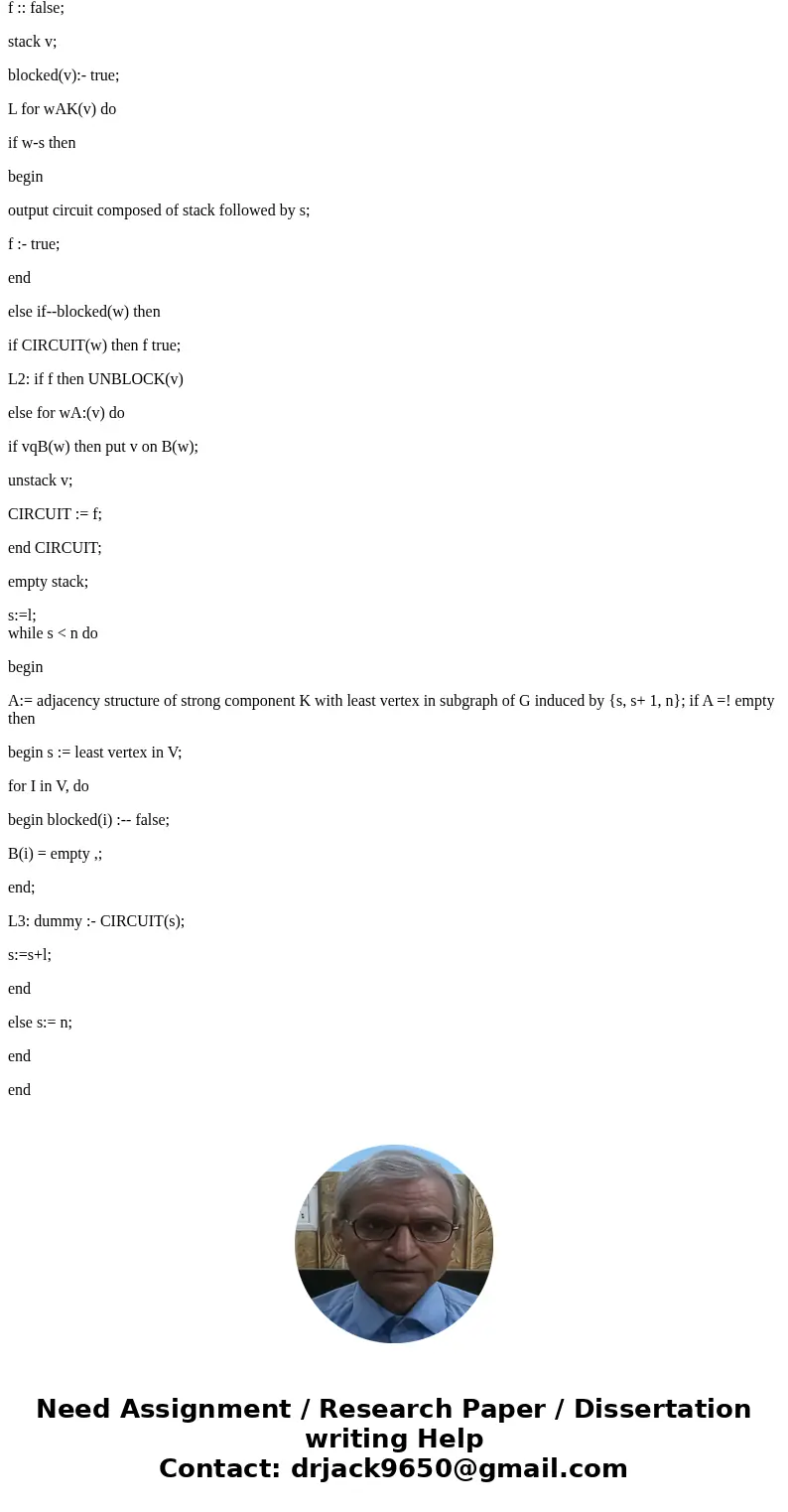Given a directed graph G V E G is said to contain perfect c
Solution
CIRCUIT-FINDING ALGORITHM
begin
integer list array A(n), B(n); logical array blocked (n); integer s;
logical procedure CIRCUIT (integer value v);
begin logical f;
procedure UNBLOCK (integer value u);
begin
blocked (u):= false;
for wB(u) do
begin
delete w from B(u);
if blocked(w) then UNBLOCK(w);
end end UNBLOCK
f :: false;
stack v;
blocked(v):- true;
L for wAK(v) do
if w-s then
begin
output circuit composed of stack followed by s;
f :- true;
end
else if--blocked(w) then
if CIRCUIT(w) then f true;
L2: if f then UNBLOCK(v)
else for wA:(v) do
if vqB(w) then put v on B(w);
unstack v;
CIRCUIT := f;
end CIRCUIT;
empty stack;
s:=l;
while s < n do
begin
A:= adjacency structure of strong component K with least vertex in subgraph of G induced by {s, s+ 1, n}; if A =! empty then
begin s := least vertex in V;
for I in V, do
begin blocked(i) :-- false;
B(i) = empty ,;
end;
L3: dummy :- CIRCUIT(s);
s:=s+l;
end
else s:= n;
end
end


 Homework Sourse
Homework Sourse